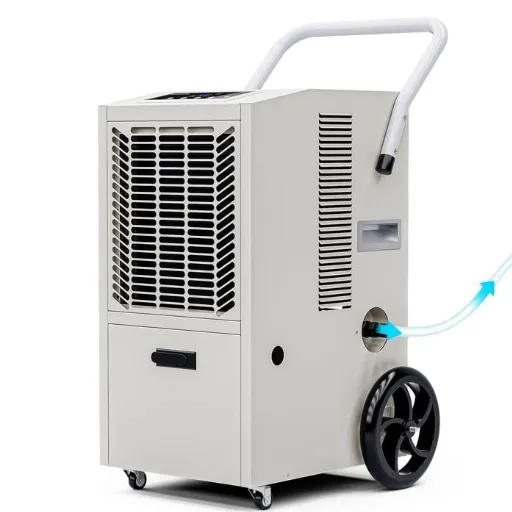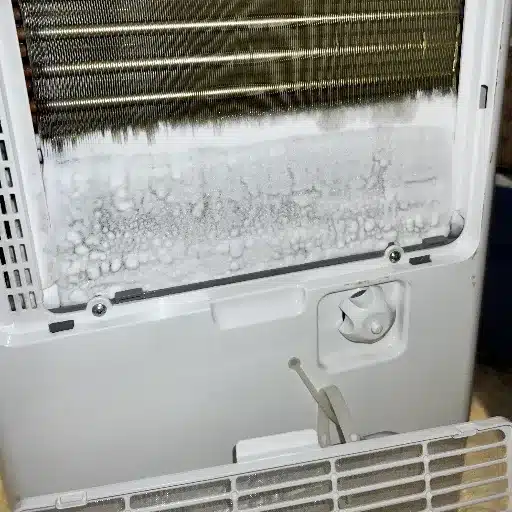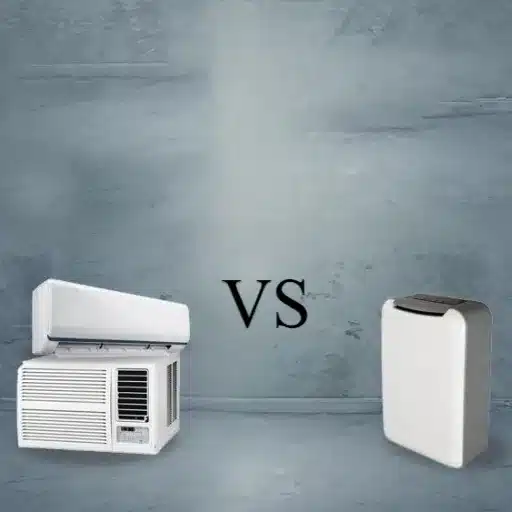Excess humidity in your home can lead to more than just discomfort—it can create the perfect environment for mold, mildew, and other issues that can impact both your living space and health. That’s where a dehumidifier comes in, serving as an invaluable tool to maintain optimal humidity levels and protect your home. But when exactly should you use one? This article dives into the essential tips for identifying when a dehumidifier is necessary, the benefits it offers, and practical advice to make your home a more comfortable and healthier environment. Whether you’re battling seasonal changes, dealing with dampness, or looking to improve air quality, we’ve got you covered. Read on to discover how and when to make the most of this powerful device.
What are the Signs You Need a Dehumidifier?
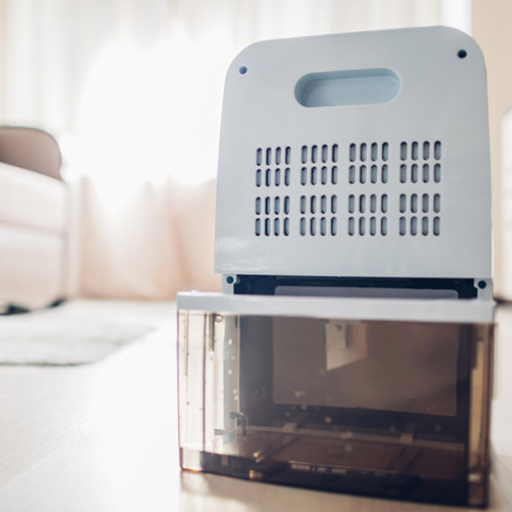
High humidity in your home can lead to several noticeable signs. Common indicators include:
- Persistent musty odors: These smells are often caused by mold or mildew growth in areas with excess moisture.
- Visible mold or mildew: Look for spots on walls, ceilings, or around windows, particularly in damp rooms like bathrooms or basements.
- Condensation on windows or walls: Regular buildup of moisture is a key sign of elevated humidity.
- Warping wood or peeling paint: High humidity can damage wooden furniture, floors, or walls, causing them to warp or the paint to bubble and flake.
- Allergy-like symptoms: Excess moisture can encourage mold and dust mites, exacerbating allergies or causing respiratory issues.
If you notice any of these signs in your home, a dehumidifier could help control moisture levels and create a healthier environment.
How Does High Humidity Affect Indoor Air Quality?
High humidity can significantly impact indoor air quality, leading to a range of potential issues that may affect both health and comfort. When relative humidity indoors exceeds 60%, it creates an ideal environment for biological pollutants like mold, mildew, and dust mites to thrive. Mold spores, in particular, can circulate through the air and cause respiratory issues, especially in individuals with asthma or allergies. Studies show that mold growth tends to accelerate when humidity levels are consistently high, as it provides the moisture necessary for fungal spores to colonize surfaces.
Excess humidity can also reduce the effectiveness of HVAC systems, as air that is too saturated with moisture feels warmer, making it harder to maintain a comfortable temperature. This often results in increased energy consumption as cooling systems are forced to work harder, leading to higher utility bills. Additionally, persistent high humidity can exacerbate the off-gassing of volatile organic compounds (VOCs) from synthetic materials, deteriorating air quality further and potentially causing irritations like headaches or eye discomfort. Managing indoor humidity levels—ideally keeping them between 30% and 50%—with proper ventilation, air conditioning, or a dehumidifier is crucial for maintaining good air quality and minimizing health risks.
What are the Common Allergy Symptoms Indicating Excess Moisture?
Excess moisture indoors can create an environment conducive to mold growth, dust mites, and mildew, which are significant triggers for allergies. Common symptoms indicating the presence of excess moisture include persistent nasal congestion, sneezing, itchy or watery eyes, and respiratory issues such as coughing or wheezing. Prolonged exposure can also lead to skin irritations, such as eczema flare-ups, or exacerbate pre-existing asthma in sensitive individuals.
According to indoor air quality guidelines, high indoor humidity—above 60%—provides the ideal conditions for mold and dust mites to thrive, which is a major contributor to allergy symptoms. Data also reveals that mold exposure, for instance, can trigger severe reactions in about 10-20% of the population with mold sensitivities and may even lead to chronic sinus infections if not addressed promptly. Recognizing these symptoms as potential indicators of excess moisture is essential, as early intervention—through dehumidification or mold remediation—can significantly improve indoor air quality and overall health.
How Can a Dehumidifier Help with Mold and Mildew?
A dehumidifier plays a crucial role in combating mold and mildew by effectively reducing indoor humidity levels—a primary factor for their growth. Mold and mildew thrive in environments where the relative humidity exceeds 60%, making damp areas such as basements, bathrooms, or poorly ventilated rooms perfect breeding grounds. By lowering ambient moisture to an optimal range of 30-50%, a dehumidifier disrupts these conditions, preventing spores from growing and spreading.
Latest statistics indicate that consistent use of a dehumidifier can reduce mold-related allergens by up to 50%, significantly improving indoor air quality for individuals sensitive to molds. Modern dehumidifiers are equipped with advanced sensors and energy-efficient technologies, enabling precise humidity control while minimizing power consumption. Additionally, high-capacity models can remove as much as 70 pints of moisture per day, making them ideal even for larger spaces with persistent dampness issues. Through regular use, a dehumidifier not only mitigates health risks but also protects furniture, fabrics, and walls from mold damage, thereby safeguarding the integrity of your home.
How to Choose a Dehumidifier for Your Needs?
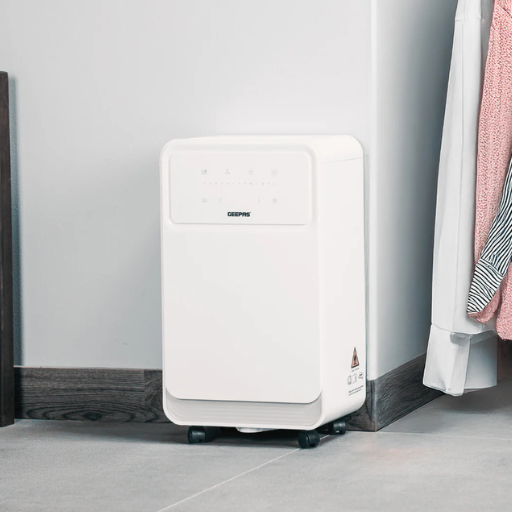
Choosing the right dehumidifier depends on the size of the space, the level of humidity, and specific needs like portability or energy efficiency. Start by measuring the square footage of the area and check the manufacturer’s recommendations for coverage. For very damp or humid spaces, choose a unit with a higher capacity, measured in pints per day. If you’re dealing with highly specific needs, like a basement or bedroom, consider features like built-in hygrometers, quiet operation, or automatic shut-off. Additionally, check for energy-efficient models to save on operating costs. Always ensure your chosen dehumidifier matches the conditions and requirements of your environment for the best results.
What is the Ideal Humidity Level in Your Home?
Maintaining the ideal humidity level in your home is vital for comfort, health, and preserving your space. Generally, the recommended indoor humidity level falls between 30% and 50%, depending on the season and climate. Levels below 30% can cause dry skin, irritated sinuses, and even damage to wooden furniture, while levels above 50% may encourage the growth of mold, mildew, and dust mites, posing health risks like allergies and respiratory issues.
During the colder months, indoor humidity should ideally range from 30% to 40% to prevent condensation on windows and potential damage to your home’s structure. Warmer seasons may allow for humidity levels closer to the upper limit of 50%. Using tools like hygrometers can help monitor these levels and ensure they remain within the optimal range.
Additionally, maintaining the right humidity boosts energy efficiency since very dry or excessively humid air makes heating and cooling systems work harder. By regulating humidity and using dehumidifiers or humidifiers as needed, you create a healthier and more comfortable living environment while protecting your home and belongings.
Should You Consider a Portable Dehumidifier or Whole House System?
When deciding between a portable dehumidifier and a whole-house system, understanding your specific needs and environment is essential. Portable dehumidifiers are ideal for targeted areas, such as a single room or a basement prone to excess moisture. These units are typically compact, easy to relocate, and often come with features like adjustable humidity settings and auto shut-off systems. Portable models generally cover spaces ranging from 300 to 1,500 square feet, with an average price range of $100 to $400 depending on capacity and features.
Whole-house dehumidifiers, on the other hand, are designed to regulate the humidity levels throughout the entire home, often integrating seamlessly with your HVAC system. These systems are more energy-efficient for large-scale moisture control and require less maintenance compared to portable units. Whole-house systems can manage spaces upwards of 3,000 square feet, with costs ranging from $1,500 to $2,800, including installation. They also allow more consistent climate regulation, which can prevent problems like mold, mildew, and structural damage caused by prolonged exposure to high humidity levels.
To make an informed choice, consider factors such as the size of the area you need to dehumidify, your budget, and how much time you’re willing to dedicate to maintenance. While portable units are cost-effective and flexible, whole-house systems ensure a uniform solution for large homes or spaces with persistent humidity challenges.
How to Use a Hygrometer to Measure Humidity?
Using a hygrometer is a straightforward process that provides you with accurate insights into the humidity levels of your environment. Follow these steps to get precise measurements:
- Choose the Right Type of Hygrometer
Select a hygrometer that best suits your needs. Digital hygrometers are highly accurate and easy to read, while analog models offer a classic look and practicality. Consider the size of your space and whether you need additional features, such as a temperature sensor or data logging capabilities.
- Place the Hygrometer Properly
For best results, position the hygrometer in the area you want to measure, away from direct sunlight, heating or cooling vents, and any sources of moisture, such as kitchens or bathrooms. Ideally, place it at least 1 meter (approximately 3 feet) above the ground to get a representative reading of the room’s ambient humidity.
- Allow Time for Adjustment
Once placed, give the hygrometer enough time to adjust to the environment. Depending on the type, this could take anywhere from a few minutes to an hour.
- Read and Interpret the Data
Most hygrometers display a relative humidity percentage. A comfortable indoor humidity level typically ranges between 30% and 50%. Levels below 30% can lead to dry conditions, which may affect your skin and respiratory system, while levels above 50% may encourage the growth of mold, mildew, and dust mites.
- Regular Calibration (if needed)
To maintain accuracy, some hygrometers require calibration. Many digital models come with built-in calibration features, while analog hygrometers might need manual adjustment. You can test calibration using a salt test—placing the hygrometer in a sealed bag with a small container of damp salt for 24 hours. The reading should be close to 75%. If it deviates, adjust accordingly.
By using a hygrometer effectively, you can consistently monitor and maintain optimal humidity levels in your indoor spaces, promoting better air quality and overall comfort.
When is the Best Time to Run a Dehumidifier?
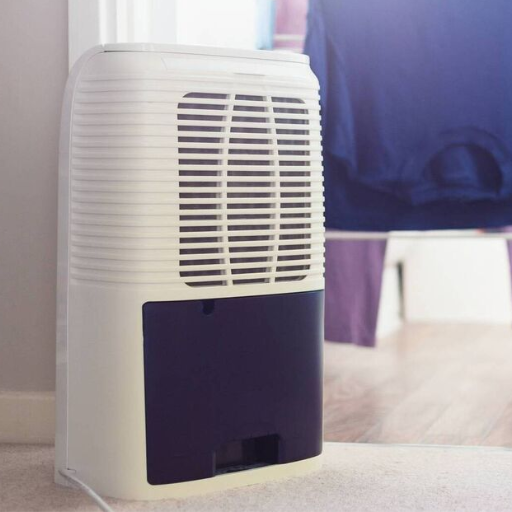
The best time to run a dehumidifier is when indoor humidity levels exceed 50%. High humidity is most common during warmer months or in damp areas of the home, such as basements, bathrooms, or laundry rooms. Running a dehumidifier in these conditions helps prevent mold growth, reduces allergens, and creates a more comfortable living environment. It’s also helpful to operate a dehumidifier after activities that release moisture, like showering or drying clothes indoors, to quickly restore balanced humidity levels. For optimal results, aim to maintain indoor humidity between 30-50%.
Is it Necessary to Use a Dehumidifier During the Summer Months?
Yes, it is necessary to use a dehumidifier during the summer months, especially if you live in a humid climate or notice excess moisture in your home. I’ve found that using a dehumidifier during this time helps maintain a comfortable indoor environment, prevents sticky air, and protects my spaces from humidity-related issues like mold or mildew.
Should You Run a Dehumidifier in the Winter?
Yes, I believe running a dehumidifier in the winter can be beneficial, but it depends on the conditions in your home. If your indoor air feels excessively damp or if you notice condensation on your windows, a dehumidifier can help balance the humidity levels, preventing issues like mold, mildew, or a musty odor. However, in colder climates with dry winter air, a dehumidifier may not be necessary and could even over-dry the air. I usually evaluate my home’s humidity levels first to see if using one is needed.
How Does the HVAC System Affect Dehumidifier Usage?
The HVAC system plays a critical role in determining whether I need to use a dehumidifier. If my HVAC system includes a humidistat or built-in dehumidification features, it often regulates indoor humidity effectively on its own. However, during periods of high humidity or if the system struggles to maintain comfortable levels, I find that using a stand-alone dehumidifier can provide additional support. Additionally, the efficiency and maintenance of my HVAC system, like regularly changing filters, can impact its ability to control moisture, influencing my decision to use a dehumidifier.
How Does a Dehumidifier Protect Your Home?

A dehumidifier protects your home by reducing excess moisture in the air, which can prevent the growth of mold and mildew. This is particularly important in areas like basements, bathrooms, or kitchens where humidity levels tend to be higher. By controlling humidity, a dehumidifier also helps protect wooden furniture, flooring, and structural elements of your home from warping or rot. Additionally, it can improve indoor air quality by reducing dust mites and allergens that thrive in high humidity, creating a healthier environment for you and your family.
Can a Dehumidifier Help Reduce Condensation?
Yes, a dehumidifier can play a significant role in reducing condensation within your home. Condensation occurs when warm, moist air comes into contact with cooler surfaces like windows, walls, or tiles, leading to water droplets forming. This is a common issue in areas where humidity levels are high or during colder months.
By removing excess moisture from the air, a dehumidifier helps to lower the overall humidity and reduces the likelihood of water vapor condensing on surfaces. For instance, experts recommend maintaining indoor relative humidity levels between 30-50% to minimize condensation and prevent related issues such as mold growth or dampness. Modern dehumidifiers are often equipped with hygrometers and adjustable settings, allowing you to monitor and control humidity effectively.
Studies also indicate that high humidity environments are conducive to the accumulation of condensation on windows, which can lead to structural damage over time. With a dehumidifier in use, homes experience a noticeable difference in not only the appearance of condensation but also in maintaining the integrity of windows, walls, and furnishings. Homes prone to condensation, such as those with inadequate ventilation or located in colder climates, can particularly benefit from dehumidifiers as a cost-effective solution to moisture management.
Investing in a dehumidifier thus serves as a proactive step in creating a more comfortable and well-maintained home environment.
What Impact Does a Dehumidifier Have on Energy Costs?
The impact of a dehumidifier on energy costs largely depends on factors such as the model’s energy efficiency, the size of the space being dehumidified, and how often it is in use. Modern dehumidifiers are designed to minimize energy consumption while effectively managing humidity levels, with many ENERGY STAR-certified models consuming up to 30% less energy than older or less efficient units. On average, a dehumidifier running for 8 hours a day may consume around 300–700 watts, varying by size and efficiency.
While operating a dehumidifier does add to electricity usage, it can indirectly reduce energy costs for heating and cooling. High indoor humidity makes the air feel warmer, prompting greater use of air conditioning. Similarly, excess moisture can make your heating system work harder during cooler months. By maintaining optimal indoor humidity levels—typically between 30-50%—a dehumidifier reduces the burden on HVAC systems, potentially lowering energy bills in the long run. Additionally, many modern units feature smart humidity controls, timed settings, and energy-saving modes to further optimize their consumption and increase cost-effectiveness.
For homeowners looking to balance air quality with energy savings, selecting an appropriately sized, energy-efficient dehumidifier can lead to measurable benefits both in comfort and in cost efficiency.
How Does a Dehumidifier Prevent Mildew in Basements?
A dehumidifier prevents mildew in basements by maintaining optimal humidity levels, typically below 50%, which creates an environment where mildew cannot thrive. Mildew, a type of fungal growth, thrives in damp, warm, and dark conditions—characteristics commonly found in basements. By extracting excess moisture from the air, a dehumidifier effectively disrupts the growth cycle of mildew, reducing the risk of musty odors, discoloration, and potential damage to walls and belongings.
Modern dehumidifiers are equipped with advanced sensors that continuously monitor humidity levels, automatically adjusting their operation to prevent the air from becoming too moist. Studies indicate that maintaining relative humidity between 30% and 50% indoors significantly decreases the likelihood of mold and mildew growth. Some units even feature HEPA or charcoal filters, which further improve air quality by capturing mold spores and allergens, ensuring the air is cleaner and healthier to breathe.
Additionally, keeping the basement well-ventilated and using a powerful dehumidifier with sufficient capacity, typically rated in pints per day (e.g., 40- to 70-pint models for larger spaces), ensures more comprehensive moisture control. This can also help protect structural elements, as excessive moisture can lead to wood rot and weakened foundations. Investing in a dehumidifier not only helps eliminate mildew risks but also boosts overall air quality and safeguards valuable property from damage.
What are the Benefits of Using a Dehumidifier?
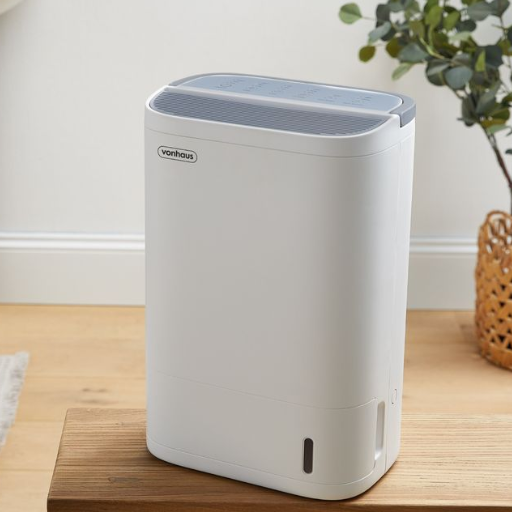
- Reduces Excess Moisture
A dehumidifier effectively removes excess moisture from the air, preventing damp conditions that can lead to problems like mold growth and mildew.
- Improves Air Quality
By reducing humidity, a dehumidifier minimizes allergens such as dust mites and mold spores, contributing to healthier indoor air quality.
- Protects Property
It helps preserve furniture, electronics, and other valuables by preventing damage caused by excessive moisture.
- Prevents Structural Issues
High humidity can weaken walls, floors, and ceilings over time. Using a dehumidifier helps protect the structural integrity of your home.
- Enhances Comfort
Lower humidity levels create a more comfortable living environment by reducing muggy and sticky conditions indoors.
How Does a Dehumidifier Improve Indoor Air Quality?
Dehumidifiers play a pivotal role in enhancing indoor air quality by addressing one of the primary culprits of poor air conditions—excess moisture. When humidity levels rise above 50%, they create an ideal environment for mold, mildew, and dust mites to thrive, all of which can trigger allergies, asthma, or other respiratory issues. By maintaining an optimal indoor humidity level—usually between 30% and 50%—a dehumidifier effectively reduces these harmful allergens.
Research shows that mold growth significantly slows when relative humidity is kept under 60%. Additionally, by eliminating moisture, dehumidifiers can help lower airborne bacterial activity, which often increases in damp environments. Their ability to remove musty odors and prevent the condensation of water on surfaces also prevents the worsening of air quality caused by damp conditions.
For households with pets or certain daily activities such as cooking or showering, which naturally release higher levels of moisture, running a dehumidifier ensures that the air remains fresh and breathable. Combined with regular ventilation and air filtration, using a dehumidifier can transform indoor spaces into healthier living environments that promote well-being and comfort for all occupants.
Can a Dehumidifier Help with Asthma and Allergies?
A dehumidifier can significantly improve conditions for individuals with asthma and allergies by reducing excess humidity, which often contributes to the proliferation of allergens. High humidity levels create an ideal environment for mold, dust mites, and mildew—common triggers for asthma symptoms and allergic reactions. By maintaining an optimal indoor humidity level, typically between 30% and 50%, a dehumidifier minimizes these allergens and helps alleviate respiratory discomfort.
According to recent studies, controlling indoor humidity can lead to a noticeable reduction in dust mite populations and their allergens, as these pests thrive in moisture-rich environments. Mold growth also decreases substantially when humidity is kept under control. For individuals with asthma, this means fewer instances of wheezing, coughing, and breathlessness. Additionally, cleaner, drier air may help reduce the frequency and severity of allergy flare-ups in sensitive individuals. Investing in a reliable dehumidifier not only enhances air quality but also fosters a safer, more comfortable home for those with respiratory vulnerabilities.
What are the Advantages of Removing Excess Moisture from the Air?
Removing excess moisture from the air provides numerous benefits, improving both personal health and the condition of indoor environments. High humidity levels can promote the growth of mold, mildew, and dust mites, which are common triggers for allergies and asthma. According to studies, maintaining indoor humidity between 30-50% helps minimize these allergens and creates a healthier living space.
A drier environment also enhances comfort by reducing the clammy feeling that often accompanies high humidity levels. This can be particularly beneficial during warmer months, as lower humidity levels make it easier for sweat to evaporate, aiding the body in cooling down and reducing reliance on air conditioning. Studies show that reducing humidity can lead to energy savings, as cooling systems operate more efficiently in drier air.
Furthermore, controlling moisture levels protects your home and belongings. Excess dampness can cause severe damage to wooden furniture, walls, and flooring, leading to warping, staining, or peeling. Electronics and appliances are also at risk, as prolonged exposure to moisture can cause corrosion. By regulating humidity, you prolong the lifespan of your possessions and reduce costly repairs.
For people living in humid climates, removing excess moisture can also deter pests like cockroaches and termites, which thrive in damp conditions. Coupled with regular maintenance, a dehumidifier is an effective way to maintain a clean, safe, and long-lasting indoor environment.
Reference Sources
-
Design and Application of a Novel Dehumidifying System for Drying Canola Seeds1:
- Key Findings: This study focuses on the integration of a dehumidifying system in a fluidized bed dryer to enhance the drying process of canola seeds. It highlights the role of controlled humidity in reducing drying times and improving efficiency.
- Methodology: The research involved designing and testing a dehumidifying system, analyzing its impact on drying performance under varying humidity conditions.
-
Hazards of Dehumidifying Agents2:
- Key Findings: This case study discusses the accidental ingestion of dehumidifying agents, emphasizing the risks associated with calcium chloride-based desiccants. It underscores the need for preventive measures to ensure safe usage.
- Methodology: The study is a forensic analysis of a fatal case involving calcium chloride ingestion, supported by medical and autopsy findings.
-
Indoor Mold Circulation and Dehumidifier Use3:
- Key Findings: This research examines the role of dehumidifiers in managing indoor mold growth, particularly in humid climates. It highlights the importance of dehumidification in maintaining healthy indoor air quality.
- Methodology: The study uses observational data from residential apartments to assess the effectiveness of dehumidifiers in mold control.
Frequently Asked Questions (FAQs)
Q: What are the signs that you might need a dehumidifier for your home?
A: Some signs that you might need a dehumidifier for your home include condensation on windows and doors, a musty smell, mold growth, and increased allergy symptoms. Using a dehumidifier can help improve your indoor air quality by removing excess moisture from the air.
Q: How does a dehumidifier help improve the air in your home?
A: A dehumidifier helps by removing moisture from the air in your home, which can prevent mold growth and reduce allergens. It can also make your home more comfortable by lowering humidity levels, and help your air conditioner run more efficiently.
Q: Is it necessary to use a dehumidifier all the time?
A: It is not necessary to keep your dehumidifier running all the time. You should use your dehumidifier when the humidity levels in your home are above 50%, as recommended by the Environmental Protection Agency. Monitor the levels and adjust usage as needed.
Q: When should you use a dehumidifier in winter?
A: You might need a dehumidifier in winter if your home is prone to high humidity levels, which can occur even in colder months. Pay attention to condensation on windows and increased indoor humidity to decide if you need to run your dehumidifier during winter.
Q: What is the difference between a humidifier and a dehumidifier?
A: A humidifier adds moisture to the air, which can be helpful in dry conditions, whereas a dehumidifier removes moisture to reduce humidity levels. Deciding between a humidifier or dehumidifier depends on your home’s humidity needs.
Q: How do I choose the right dehumidifier for my home?
A: To choose the right dehumidifier for your home, consider the size and capacity. A whole house dehumidifier is suitable for large spaces, while portable units can be used for specific rooms. Assess the humidity levels and the square footage to buy a dehumidifier that meets your needs.
Q: Can using a dehumidifier help with allergies?
A: Yes, using a dehumidifier can help with allergies by reducing excess moisture that can harbor allergens like mold and dust mites. Lower humidity levels can lead to improved indoor air quality and fewer allergy symptoms.
Q: What is the benefit of whole house dehumidifiers?
A: Whole house dehumidifiers are beneficial because they can dehumidify larger areas efficiently, helping to maintain consistent humidity levels throughout your entire home. This can lead to a more comfortable living environment and better air quality.
Q: Should I use a dehumidifier during the spring?
A: Yes, using a dehumidifier during the spring can be beneficial as humidity levels often rise with warmer temperatures. Dehumidifiers can help remove moisture, preventing mold and improving air quality.

